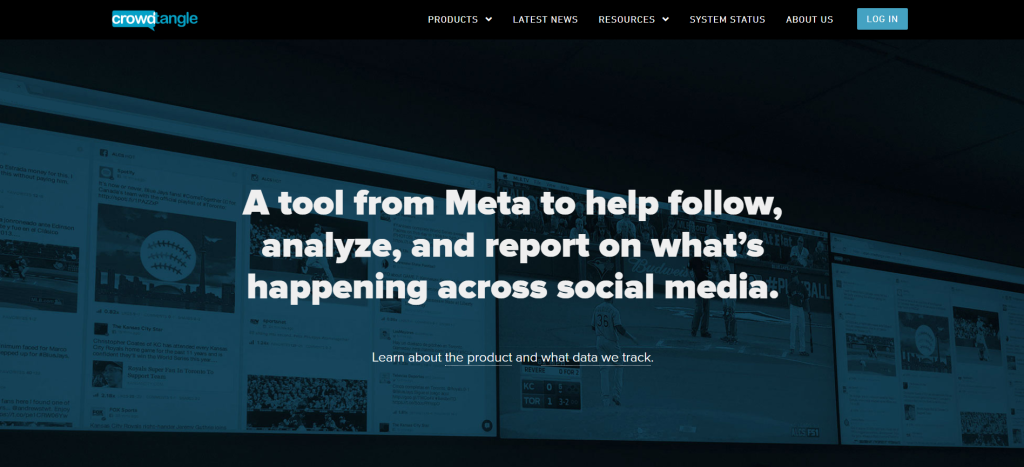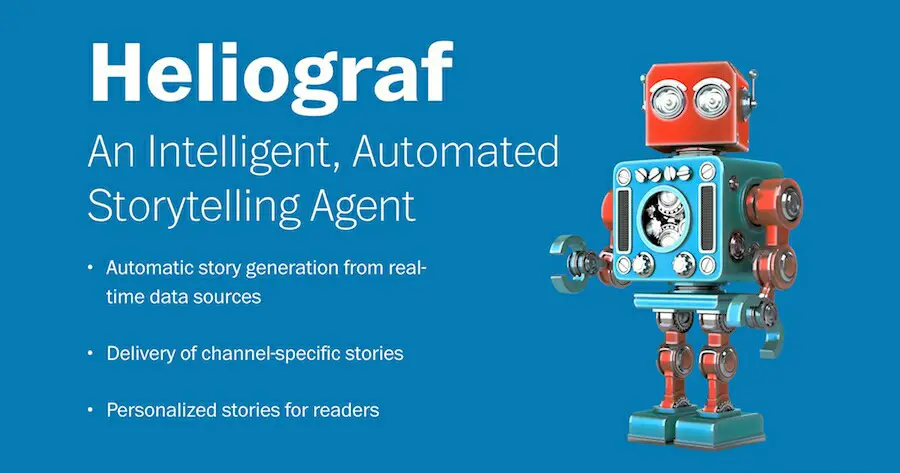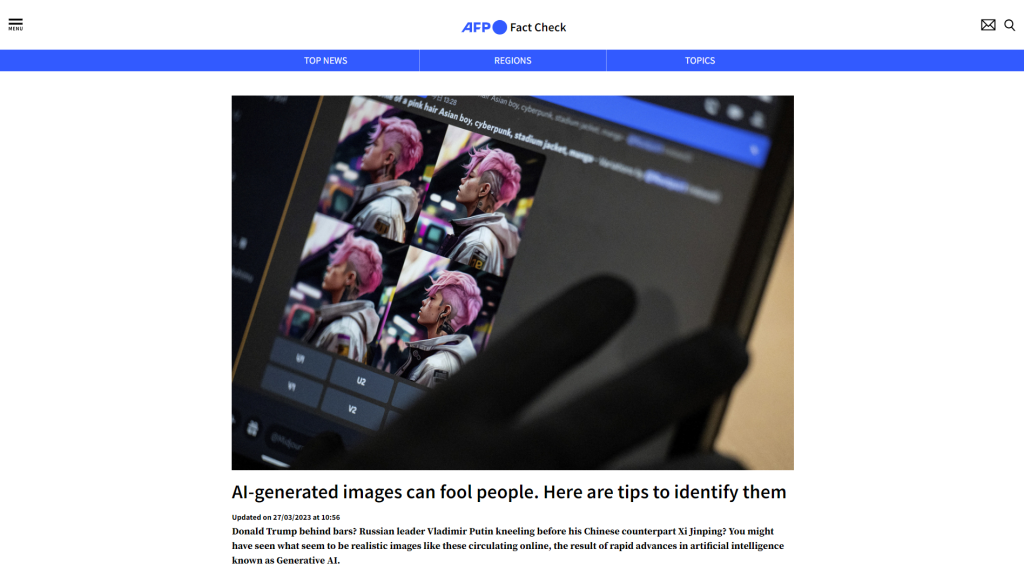
In an era where speed is paramount and attention spans are shorter than ever, AI has swooped in to revolutionize journalism. Imagine the world’s best journalists working tirelessly around the clock, penning captivating articles that satisfy our insatiable hunger for fresh news. While this idea may sound like a sci-fi fantasy, it’s not fiction anymore – it’s the reality of AI-powered news writing. Let’s dive into the staggering developments in artificial intelligence with On-Page.ai that are shaking up the traditional foundations of journalism and giving us a taste of the future today!
Artificial intelligence has already begun to transform the field of news writing, with some organizations using AI tools to automate fact-checking, data analysis, and even drafting articles. While concerns remain about potential abuses and the replacement of human journalists, well-implemented AI can help increase efficiency and productivity in newsrooms while producing high-quality content that may also help reduce errors and biases in reporting. Our website provides insights into AI’s role in news writing and offers guidance on best practices for incorporating AI into your own organization’s workflow.
What is AI-Powered News Writing?
Artificial intelligence (AI) technology has been developing at an extraordinary pace and has revolutionized various industries, including journalism. With the introduction of AI-powered news writing, it is now possible to automate certain aspects of journalism, increasing efficiency while minimizing time and resources.
AI-powered news writing involves using machine learning algorithms to analyze large amounts of data and provide insights that are used by journalists to create news stories. In essence, this technology takes care of the repetitive tasks associated with news writing, such as gathering information, fact-checking, and cleaning up text. This leaves human journalists more time to focus on critical thinking and creative activities such as analysis and opinion.
For instance, Bloomberg News announced in 2019 that they would be utilizing an AI system that automatically generated articles on quarterly earnings reports. The AI system extracts relevant information from press releases and company financial reports then puts together a coherent written piece in seconds.
Automated news writing enables faster production of high-quality, objective stories. It also helps ensure accuracy by reducing the chances of spelling or grammatical errors originating from human fatigue.
Aside from speeding up the process, AI-powered news writing produces a higher volume of content with different tones for different platforms. Instead of every story having only one tone, it is now possible to write stories that suit specific platforms which allows for any emotion difficult to convey by merely stating facts!
This advanced technology requires a preliminary standard approach to gather data copies before beginning the formulation of articles. Advanced analysis tools like On-Page.ai enable reporters to compile information efficiently. This helps dispense some energy-consuming research works and vetting processes.
Despite these benefits, there remain many areas where AI-powered news writing tools fall short. Perhaps because our brains are wired differently from machines, AI may sometimes miss key points in organizations’ press releases or reports.
Machines are not yet capable of human-level emotional intelligence, and there is a limit to what they can convey in terms of context. They might miss the nuance required when presenting the audience with relevant information.
There are times when important facts require a more detailed examination or critical analysis from skilled journalists. Sometimes extensive research involving privileged access and expert sources or data-driven investigation will be needed to identify and explain complex issues of public importance.
Think about an orchestra performance. While machines may be able to play nearly perfect notes as programmed, we still depend on a human conductor for bringing the music’s interpretation and emotion. Similarly, machines could provide us with the facts, but actual storytelling relies on making sense of those facts by blending them with our experiences and perceptions.
- According to a 2019 study by the Tow Center for Digital Journalism, around 12% of surveyed newsrooms in the United States were using AI or machine learning technologies for tasks such as producing reports or data analysis.
- In 2020, researchers at Stanford University found that when people were asked to judge the credibility of AI-generated news articles compared to human-written ones, they gave AI-written samples a credibility score comparable to that of human-written content: on average, 3.67 out of 5 for AI-generated and 3.76 out of 5 for human-generated news pieces.
- A report published by the Reuters Institute for the Study of Journalism in 2021 revealed that AI-driven journalism can process large amounts of data up to 50-60 times faster than human journalists, offering potential efficiency gains across various areas in the newsroom.
The Impact of AI on the News Writing Industry
AI has already created an impact on the news writing industry and will continue to do so as technology advances and becomes more sophisticated.

For instance, at Forbes Media, an AI algorithm called Bertie was implemented in 2018 to assist reporters in generating rough drafts for articles. Bertie’s primary objective was to simplify tasks like suggesting potential sources of inclusive quotes or background figures from content that reporters start composing.
AI-powered news writing has saved time in the publishing sector as well. In 2019, GPT-2 (a powerful natural language processing model developed by OpenAI) made headlines after it generated an article that fooled readers into believing they were human-written rather than computer-generated.
This indicates that advanced AI algorithms can write high-quality articles just like their human counterparts in some cases. As this technology advances, it will automate news gathering tasks and streamline the writing process by making use of data mining techniques, automation in content creation and curation, and predictive tools.
While AI-generated content is not a replacement for human journalism, it is effective when used appropriately. For instance, AI algorithms could be leveraged to cover events in real-time or curate news pieces on trending topics. This capacity frees up reporters’ time and resources to tackle more challenging editorial assignments which require critical analysis.
Despite the potential benefits of AI in news writing, there are also concerns about how it may impact employment opportunities in the industry. As machines become more sophisticated at mimicking human capabilities, some journalists fear that their jobs may become redundant.
Additionally, ethics have arisen as an issue regarding AI-powered news writing such as ownership of intellectual property rights on articles created by bots, attribution of sources researched and help minimise unintentional bias that may result from improperly filtered news stories produced by these algorithms.
On the other side, innovations can overcome this problem since the software is capable of detecting repeated phrases that deem plagiarism or warnings of repetitive content provided within the On-Page.ai tool suite.
Much like any other profession evolving with technological advances, journalism when adapted accordingly will have new roles arise. As we have seen over the past centuries with revolutions in printing presses and telegraphs after nuclear power and computers, new positions develop as we expand our abilities; an example being webmasters and SEO experts. Nevertheless, journalistic bots tend to constitute rather complementary “assistants,” offering journalists less monotonous work types and helping them focus on what readers consider most valuable: human interpretations built on instincts & experiences.
Automating Reporters’ Jobs
Artificial intelligence has already made its way into the news writing industry, and one of its most significant impacts is on the role of human reporters. With the use of AI-powered tools for generating articles, automating fact-checking, and analyzing data, there are concerns that this technology could replace certain aspects of a reporter’s job.
One argument for this automation is that it frees up time for reporters to focus on more in-depth reporting, investigation, and storytelling. However, many fear that this shift will ultimately lead to the loss of jobs in the industry. The development of AI-driven systems for news writing raises several ethical concerns around unemployment and job security.
Critics argue that while AI may be able to automate certain aspects of news writing like generating straightforward stories or reports based on data, there will always be a need for human reporters to exist. The art of storytelling cannot always be replicated by an algorithm. Human insights, perspectives, context, and critical thinking are crucial components of journalism that machines simply can’t replicate.
Another concern raised is the lack of emotional intelligence reflected in AI-generated content. Machines can’t empathize or understand subtle nuances like human emotions, which may be important when covering sensitive topics or events.
However, proponents argue that AI-generated content has shown significant improvements in quality over time. Studies have shown that readers often preferred articles generated by machines compared to those created by human reporters if they couldn’t differentiate between them.
Platforms like OpenAI’s GPT-3 (Generative Pre-trained Transformer 3) have demonstrated advanced language generation capabilities. In some cases, these systems have been able to produce articles that are indistinguishable from those written by humans. Moreover, machines don’t face constraints such as fatigue or subjectivity when it comes to delivering unbiased factual information.
However, despite these improvements in accuracy and speed of automated reporting, there will always be complexities that machines cannot handle, such as difficult-to-understand data or private sources that are only available to journalists.
Technology Companies Entering the Market
There is no doubt that AI-powered news writing is a growing industry, and technology companies are increasingly investing in it. Major companies like Google and Facebook have already established partnerships with news organizations to shape how content is produced, distributed, and monetized.
For instance, Google’s open-sourced BERT (Bidirectional Encoder Representations from Transformers) algorithm has been used by newsroom developers to help automate their writing process. BERT helps machines understand language more precisely than before by using more contextual information. By doing so, this tool helps researchers to identify the evidence and research needed for a given topic.
Additionally, tech startups such as Automated Insights have developed solutions specifically designed for automating reporting tasks in areas such as finance, sports, and e-commerce. Their software platform Wordsmith uses natural language generation techniques which can generate written narratives at scale.
Facebook has also launched tools like CrowdTangle that aids journalists in monitoring trends on the platform. It allows newsrooms to search for topics being shared across Facebook and Instagram at an unprecedented speed and volume.

Another example of this trend is the Associated Press’ automation of earnings reports through the use of algorithms. They were able to generate stories about earnings results much faster than human reporters could covering 4Q12., expanded to produce many additional spots that might not otherwise receive coverage from human writers.
The impact of AI-driven news writing isn’t just limited to large media companies either – smaller operations such as Buzzfeed have also begun experimenting with generating content using AI-powered tools.

However, while these new technologies show tremendous promise for changing how we produce news content, they have also raised concerns about how machine-generated articles could impact traditional journalism practices. The concern goes beyond simple automation; it’s a question of quality, accuracy, and integrity in content–all areas that require human intervention.
Examples of AI in Journalism
Artificial intelligence in journalism is rapidly gaining popularity and acceptance. From chatbots to news writing, AI has transformed the way news is created and disseminated. Here are some examples of how AI is used in newsrooms:
The Washington Post’s Heliograf: One of the most significant developments in the field of AI-powered journalism is The Washington Post’s Heliograf. It is a software that can automatically generate news stories based on data inputs. For example, during the 2016 Rio Olympics, Heliograf generated stories on individual medal winners in less than a minute. It also provided coverage of the election results and produced thousands of articles for every race across the US.

Associated Press: The Associated Press integrated Automated Insights’ Wordsmith into its newsroom processes and created machine-generated reports for minor league baseball games as part of its efforts to increase efficiency and engagement with readers.

BBC News: While BBC News experimented with using machine learning techniques to personalize their content delivery, allowing users to access news more relevant to them.

Bloomberg News: Bloomberg News uses Cyborg technology to provide behind-the-scenes analysis on the stock market and make complex trading decisions by sifting through vast amounts of data sourced from social media, financial indexes, and third-party services.

Forbes Magazine: Forbes magazine’s reporting quality increased considerably after it began using Narrative Science. Narrative Science leverages natural language processing (NLP) algorithms to convert data into insightful narrative summaries without human intervention.

Overall, the impact of AI on journalism is highly positive as it frees up time so that reporters can focus more on researching stories and analysis instead of doing mundane tasks like data entry or fact-checking.
- The use of artificial intelligence in journalism has become more prevalent and has significantly transformed the way news is being generated and disseminated. News outlets are using AI-powered tools, such as software like The Washington Post’s Heliograf and Narrative Science, to create news stories based on data inputs or convert data into insightful narrative summaries without human intervention. This technology has helped increase efficiency while allowing reporters to focus more on researching stories and analysis. Moreover, it’s not only limited to written content but also extends to personalized content delivery and behind-the-scenes analysis of complex data. Overall, the impact of AI on journalism has been highly positive as it enables automation of mundane tasks like data entry or fact-checking.
Data-Driven Stories
Perhaps one of the greatest benefits of using AI in journalism is the creation of data-driven news stories. Here’s how AI-powered technology helps with data journalism and how it can affect future news coverage.
FiveThirtyEight: Previously, journalists manually analyzed and interpreted data points that were far too numerous to be done manually. Enter machine learning algorithms which allow newsrooms to sift through vast amounts of information and identify trends or patterns in a more efficient manner. Nate Silver’s FiveThirtyEight used statistical models to calculate the winners of the 2012 presidential election with remarkable accuracy.

Ethical Questions Raised: However, there are ethical considerations around using machine-learning algorithms for news writing – particularly if the insights gleaned from these models come from biased or incomplete datasets.
Newsroom Innovations: Using AI technology can also lead to creating new ways of presenting information in an engaging way, something that traditional news outlets often struggle with. Tools like Infogram, Plotly, and Flourish give pre-made charts and graphs that are both easily digestible for the reader and shareable on social media sites – instances where data journalism has already shown itself to be most effective.
Reuters uses AI tools to detect factual inaccuracies in videos spread online. This allows them to report truthfully within minutes of any visual evidence being shared online.

Newsroom Innovations
Artificial intelligence (AI) is slowly but surely making its way into the news industry. It has streamlined many processes, enabling journalists to work more efficiently and effectively. In this section, we’ll explore some of the ways newsrooms are using innovations in AI to their advantage.
One of the biggest innovations that AI has brought to newsrooms is augmented writing. Some media outlets have experimented with bots that act as virtual reporters and writers, automatically generating news stories or reports based on data streams from different sources. These bots can comb through tweets, transcripts, articles, and other sources to create a summary of events or trends.
In addition to automated reporting, AI has brought about language translation capabilities to help media outlets bridge language barriers and reach new audiences. For instance, machine learning algorithms can translate content into multiple languages simultaneously. As a result, news organizations can break down some of the cultural barriers that hindered them from reaching out to new markets worldwide.
One great example of such innovation is Agence France-Presse (AFP), which uses an algorithm called “AFP Fact Check” to identify fake news on social media networks and debunk them. The algorithm analyzes the context of posts on Facebook and Twitter by comparing images and datasets against AFP’s databases of verified information. This data-driven storytelling allows reporters to produce fact-checked content instantly.

Another example is NPR’s Project Argo. This initiative combines the expertise of NPR editors and reporters with developers’ technical skills to create entirely new journalistic experiences using emerging technologies like APIs and real-time data analytics. Through this project, NPR was able to develop several applications that allow their journalists access a trustworthy archive of thousands of previously written stories.
While these AI-powered innovations in journalism are benefiting the industry in countless ways, they also raise some valid concerns.
Benefits and Concerns in AI-Powered News Writing
One of the significant benefits to newsrooms is that AI can offer greater efficiency in reporting. With bots doing much of the legwork, journalists can allocate more time to investigating, interviewing, and analyzing data.
However, some people argue that “robot reporters” could result in fewer employment opportunities for human reporters and editors. Can machines deliver the same nuance as humans? How does a machine identify who they should interview and what information is crucial to include in an article? Many journalists worry about the difficulty of creating engaging content without a personal touch or intuition.

It may be better to think of AI-powered journalism as an assistant rather than a replacement for reporters. Machines could take care of the repetitive tasks involved with fact-checking and translate them into different languages so that journalists can focus on producing high-quality articles that resonate with readers.
Another benefit of AI-powered news writing is cost savings. Traditional reporting requires higher costs and takes longer times from gathering to publishing content. On the other hand, automated reporting tools can provide up-to-date news coverage with minimal manpower necessary. Reducing necessary tasks means reducing expenditures required by the media industry, which would ease the financial burden on struggling news organizations.
With these innovations come both benefits and concerns to AI-powered news writing. By continuing to evaluate technology’s ethical concerns and limitations while striving for journalistic excellence, we can reach new heights in terms of reaching readers worldwide while delivering stories that shine with journalistic integrity.
Ethical Considerations
One of the biggest concerns with AI-powered news writing is the potential for bias and ethical considerations. As we entrust machines to write news articles, there is a risk that they may unintentionally perpetuate stereotypes and biases. One example of this was seen in an experiment by researchers at Georgia Tech and Ohio State University, where an AI-generated story about a terrorist attack was more likely to describe the attacker as “Muslim” than if the same story was written by a human.
Another issue with AI-written news is that it can be difficult to verify its accuracy and fact-check information. While AI algorithms can sort through large amounts of data quickly, they may not possess the necessary context or judgment to accurately report on a story. Additionally, because AI-generated articles lack human intuition and understanding of emotional nuance, they may lack empathy in their presentation of complex issues.
One real-life consequence of this concern arises when considering reports related to politics or social justice issues. For instance, imagine an AI algorithm generates an article about an important issue such as minority rights, but it gets some details wrong or lacks context. This could lead to misinformation being spread or certain communities feeling misrepresented.
Moreover, the use of too much automation in journalism raises ethical concerns about taking jobs away from human reporters. Given that numerous journalists have already lost their jobs due to declining revenue and increasing competition from alternative sources such as blogs, podcasts, and YouTube channels, there is legitimate fear about the potential loss of even more jobs if more automated content comes into use.
On the other hand, some argue that using AI in news writing could also have benefits. For one thing, the speed at which we receive news would increase dramatically if algorithms were programmed well enough to automatically write accurate articles without requiring any time-consuming input from humans. This would help reduce gossip about fake events as well as misinformation.
Another potential advantage of AI-generated news articles is that algorithms could be programmed to ensure neutrality in reporting on contentious issues. For example, if the algorithm were to read that some people mistrust a particular fact, it could delete that point from the story altogether. This would help avoid sensationalism and the spreading of false information.
However, there is no guarantee that AI-written articles will always remain unbiased or impartial. Machines can only generate outputs based on the data they are trained with and as such, they are prone to encoding prior biases into their algorithms. In addition, since machines lack intuition, they may not always be able to make ethical judgments in situations where journalistic integrity is needed.
To take an analogy, imagine a team owner deciding to replace all human players with robots in order to win future games without taking into account the economic impacts of their decision on the community. Although robots may ensure easy wins for the team owner, this may result in significant job loss for players and staff as well as hurt tourism revenues impacted by team fandom.
Ultimately, while AI-powered news writing has potential benefits, we need to consider ethical concerns around representation and job loss carefully before replacing human jobs with machines. At On-Page.ai, we believe in striking a balance between AI and human expertise rather than choosing one over the other. As such register an account, we offer cutting-edge technology that integrates AI insights while leaving room for human judgment and intuition when needed.
Common Questions and Explanations
What ethical considerations arise when using AI in news writing?
As AI becomes more prevalent in news writing, it is important to consider the ethical implications of this technology. One major concern is the potential for bias to be introduced through the programming of AI algorithms. Research has shown that AI systems can perpetuate existing biases present in society and even amplify these biases if not properly trained. For example, a study by Stanford University found that facial recognition software was less accurate at identifying darker-skinned individuals, revealing a racial bias within the technology.
Another concern is the potential loss of jobs for human journalists as AI systems become more advanced in their ability to write news articles. This could have serious economic and social consequences.
- Moreover, there are concerns about accountability and transparency when it comes to using AI-generated content in journalism. As machines continue to produce more content, it may become difficult for readers to distinguish between what was written by humans and what was generated by AI.
- Therefore, it is crucial for news outlets to be transparent about their use of AI in producing content and take steps to ensure that any bias present in the technology is addressed. It is also important for companies developing AI systems for journalism to prioritize ethics and accountability in their practices.
- Ultimately, while AI offers many benefits to the field of journalism, it is crucial that we approach its use with care and consideration for ethical considerations in order to avoid exacerbating existing inequalities and uphold journalistic integrity.
How has AI changed the landscape of news writing?
The emergence of AI in news writing has revolutionized the landscape of journalism. These intelligent systems have transformed the speed, accuracy, and efficiency of news creation and dissemination.
- Firstly, AI has played a vital role in the automation of news production processes. Newsrooms use AI-powered software to detect and generate topics that are popular among audiences, thereby optimizing their content output. According to a report by Narrative Science, around 61% of companies already incorporate AI as part of their business strategies for various purposes, including content creation.
- Moreover, AI helps journalists deliver relevant content by analyzing massive amounts of data gathered from social media platforms, news sites, and other sources. This leads to more personalized content delivery to users. For instance, since 2018, Reuters has been using an AI tool known as Lynx Insight that analyzes data and helps reporters draft stories.
- AI also plays a significant role in breaking news coverage. Tools like Google News Lab help reporters access large volumes of data related to their stories quickly. This means faster turnaround times for journalists reporting on events and instant updates for readers.
- However, some concerns have been raised about the impact of AI on journalistic quality and ethics. Critics argue that reliance on AI-generated content may lead to the proliferation of fake or biased news. However, with responsible usage and human oversight, the upside of AI far outweighs its potential negative impacts.
In conclusion, AI has transformed news writing by improving efficiency, accuracy, and speed while providing insight into user preferences. It is essential for journalism stakeholders not only to consider the benefits but also be cautious about addressing editorial issues that arise from enlisting technology in their efforts towards keeping society informed.
How will advancements in AI technology continue to shape the future of news writing?
Advancements in AI technology are already changing the news writing industry and will continue to do so in the future. With the help of Natural Language Processing (NLP), machine learning, and deep learning, AI is capable of producing high-quality articles quickly and accurately, without any human intervention.
One of the biggest benefits of using AI in news writing is speed. AI can process vast amounts of data and generate news articles in a matter of seconds. This means that journalists can focus on more complex stories that require human input, while AI handles the mundane tasks such as summarizing data or facts.
Another benefit is personalization. AI algorithms can analyze a reader’s interests, preferences, and browsing behavior to deliver tailored content that matches their individual needs. This enables publishers to increase engagement and keep readers coming back for more.
AI also has the potential to combat fake news by fact-checking and verifying information before it is published. This could go a long way toward rebuilding trust in the media industry, which has suffered significant setbacks due to the proliferation of misleading or inaccurate information.
Despite these benefits, there are also concerns about the ethical implications of AI-generated content. Critics worry about biases in algorithms and the potential for AI-generated news to replace human journalists altogether.
Nevertheless, there is no denying that AI will continue to shape the future of news writing. By increasing speed, personalization, and accuracy while reducing costs, AI has established itself as a valuable tool for publishers looking to stay ahead in an increasingly competitive market. Visit On-Page.ai to learn about useful tools and content customization.
What are some examples of successful AI-driven news stories?
The use of AI in news writing has led to the creation of innovative, high-quality content that resonates with readers. One example of a successful AI-driven news story is The Washington Post’s “WaPoBot”. In 2019, WaPoBot was able to generate approximately 850 articles. Furthermore, 500 of them were published on the website and print edition, which is about half of the newspaper’s published output for that month. According to Washington Post’s chief engineer Jeremy Gilbert, with WaPoBot in place, human reporters can now focus on more critical reporting tasks.
Another noteworthy example is Reuters News Tracer that utilizes machine learning technology to identify breaking news stories quickly. This tool assisted Reuters in breaking several significant stories before traditional media outlets, such as Donald Trump’s potential appointment of Steve Bannon as his campaign manager in 2016. The tool has been so effective that it bolstered Reuters’ credibility and became an influential source in providing accurate information.
AI-driven content can also personalize stories that cater to specific target audiences. For example, the Associated Press’ (AP) “robot journalists” can create thousands of earnings reports every quarter that provide detailed insights into stock market performance for each company. These reports were created using Natural Language Generation (NLG), a subset of AI that gives machines the ability to write narratives independently. They have saved AP over 20% on operational expenses associated with reporting quarterly earnings.
In conclusion, these examples demonstrate how artificial intelligence enhances journalistic output and makes it more efficient while streamlining operational costs too. AI enables faster and more economical news production for media organizations, empowering them to communicate with accuracy and precision while touching millions of lives across the globe who depend on updated and trustworthy information.
How have journalists adapted to using AI in their work?
As the field of journalism undergoes a technological transformation, journalists are increasingly utilizing artificial intelligence (AI) tools to enhance their work. One significant way journalists have adapted is by incorporating AI into their news-writing process. According to a study conducted by the Reuters Institute for the Study of Journalism, 70% of news organizations surveyed claimed to be experimenting with machine learning and other AI technologies.
AI-powered tools such as Grammarly and Hemingway Editor help writers improve their writing by detecting errors in grammar, syntax, style, and tone. In addition to these writing assistants, many newsrooms now use natural language processing (NLP) software to generate automated news articles, analyze data, conduct interviews with bots and break down large data sets in real-time.
Incorporating AI has also helped journalists with fact-checking and information gathering tasks which require repetitive attention. For example, the Washington Post’s “Truth Teller” utilizes NLP to determine if political statements are true or false based on analysis of previous speeches and existing data points.
Overall, I predict that the use of AI in journalism will only continue to grow over time as journalists seek out faster ways to gather data and produce impactful stories that resonate with readers. By integrating AI like On-Page.ai into their workflows, journalists can be more efficient and receive more accurate data than ever before – freeing up their time for deep investigative reporting that will help shape our society for years to come.




